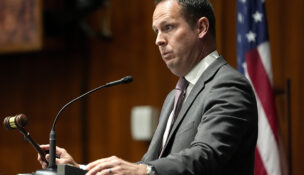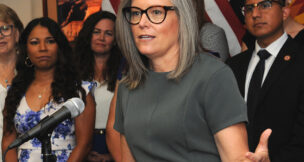Regional plan would give greenhouse gases the cold shoulder, over some objections
Arizona Capitol Reports Staff//September 26, 2008//[read_meter]
Regional plan would give greenhouse gases the cold shoulder, over some objections
Arizona Capitol Reports Staff//September 26, 2008//[read_meter]
Leader of the Pack • An Arizona Department of Environmental Quality report says the state has the fastest growth rate of greenhouse-gas emissions in the United States. The costs of...
No tags for this post.

















